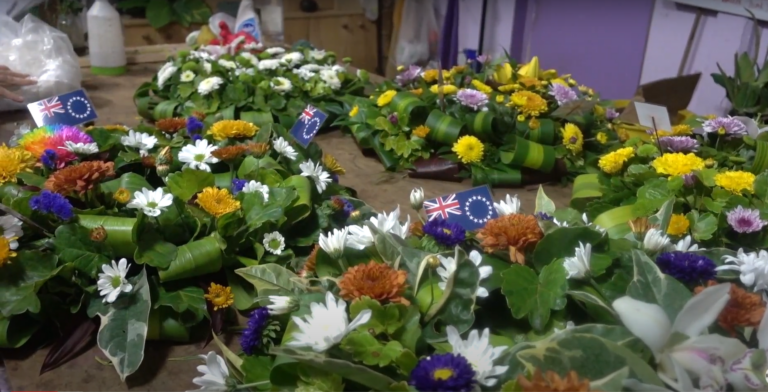
Celebrate Birthdays with Island Craft’s Vibrant Birthday Packages in Rarotonga and Pa Enua
Birthdays are a time to celebrate with love and joy, and a beautifully crafted bouquet
in NZD dollars via ANZ
and Pa Enaua
Order and pay online
Around Rarotonga Order before 1pm
These ukuleles are typically made from a combination of local woods, including coconut palms, and often feature intricate carvings and inlay work. The traditional design of a Cook Islands ukulele has a slightly longer neck and a wider fretboard than other types of ukuleles, which gives it a distinct sound and feel.
Cook Islands ukuleles are highly prized by collectors and musicians alike, and they are often considered to be some of the finest ukuleles in the world.
Right-handed ukuleles and left-handed ukuleles refer to the orientation of the instrument and how it is played. A right-handed ukulele is designed to be played with the right-hand strumming or plucking the strings and the left hand fretting the notes on the neck of the instrument. Conversely, a left-handed ukulele is designed for left-handed players, with the opposite orientation of strings and frets.
Most ukuleles on the market are designed for right-handed players. Left-handed ukuleles have a reversed string arrangement, with the highest pitched string (the A string) on the right side of the fretboard and the lowest pitched string (the G string) on the left side of the fretboard. Some left-handed players choose to restring a right-handed ukulele to play left-handed, but this requires some adjustments to the nut and bridge of the instrument.
When choosing between a right-handed or left-handed ukulele, it is important to select the one that feels most comfortable and natural to play.
Left-handed Cook Island ukuleles are designed for left-handed players, with the orientation of the strings and frets reversed from that of a right-handed ukulele. The highest pitched string, the A string, is on the right side of the fretboard, while the lowest pitched string, the G string, is on the left side of the fretboard. This allows left-handed players to strum and fret the instrument in a more natural and comfortable way, without having to contort their hands or adapt to a right-handed design.
Like their right-handed counterparts, left-handed Cook Island ukuleles are made from a variety of local woods, including coconut palms, mango, and ironwood. These materials give the ukulele a distinct look and feel, with intricate carvings and inlay work that reflect the rich cultural heritage of the Cook Islands. Left-handed Cook Island ukuleles are available in a variety of styles and designs, each with its own unique sound and character.
One of the most famous types of Cook Island ukulele is the Rarotongan ukulele, known for its exquisite craftsmanship and intricate carvings and inlay work. Left-handed Rarotongan ukuleles are highly sought-after by left-handed players, prized for their ability to produce a rich, warm tone that is perfect for playing traditional Pacific Islander music. Other types of left-handed Cook Island ukuleles include the Atiu ukulele, known for its mellow, soothing tone, and the Mangaia ukulele, with its darker, richer sound.
If you are a left-handed player interested in a Cook Island ukulele, it is important to make sure that the instrument you choose is available in a left-handed configuration or can be customized to suit your needs. Customizations may require additional time and cost, but a left-handed Cook Island ukulele can be a unique and beautiful instrument that allows left-handed players to fully enjoy the rich, warm tones and intricate craftsmanship of this lesser-known type of ukulele.
In conclusion, left-handed Cook Island ukuleles offer a unique and beautiful instrument for left-handed players who are looking for an alternative to standard right-handed ukuleles. With their distinctive design, local materials, and exquisite craftsmanship, left-handed Cook Island ukuleles are a wonderful way for left-handed players to explore the world of ukuleles and enjoy the rich musical heritage of the Cook Islands.
share this :

Birthdays are a time to celebrate with love and joy, and a beautifully crafted bouquet

Each year on April 25, the Cook Islands join Australia and New Zealand in commemorating